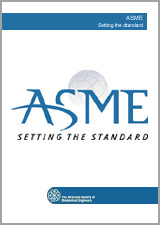We need your consent to use the individual data so that you can see information about your interests, among other things. Click "OK" to give your consent.

The information about the standard:
Designation standards: ASME PTC12.1:2015
Publication date standards: 2016
SKU: NS-1205166
The number of pages: 74
Approximate weight : 222 g (0.49 lbs)
Country: American technical standard
Category: Technical standards ASME
Annotation of standard text ASME PTC12.1:2015 :
This Code provides the procedures, direction, and guidance for determining the performance of closed feedwater heaters with regard to the following: (a) Terminal Temperature Difference (TTD), which is the difference between the saturation temperature corresponding to the steam inlet pressure and the feedwater outlet temperature; (b) Drain Cooler Approach (DCA), which is the difference between drain outlet temperature and feedwater inlet temperature; (c) Tube side (feedwater) pressure loss through the heater; and (d) Shell side pressure loss through the desuperheating zone, and through the drain cooling zone. This Code applies to all horizontal and vertical heaters except those with partial pass drain cooling zones. Designs with partial pass drain cooling zones are horizontal heaters with submerged drain cooling zones, and vertical channel-up heaters with drain cooling zones. In those designs, only a portion of the feedwater passes through the drain cooling zones; therefore, there are two feedwater flow streams with different temperature profiles. A feedwater heater is designed to accomplish heat transfer between fluids. The heater design is based on a specific operating condition that includes flow, temperature, and pressure. This specific condition constitutes the design point that is found on the manufacturers feedwater heater specification sheet. It is not feasible to expect that the test will be conducted at the design point. Therefore, it is necessary to predict the heater performance by adjusting the design parameters for the test conditions. Methods of calculating the predicted heater performance are presented in the Code. These predicted values shall then be compared to corresponding measured test values.
We recommend:
Technical standards updating
Do you want to make sure you use only the valid technical standards?
We can offer you a solution which will provide you a monthly overview concerning the updating of standards which you use.
Would you like to know more? Look at this page.



 Cookies
Cookies
